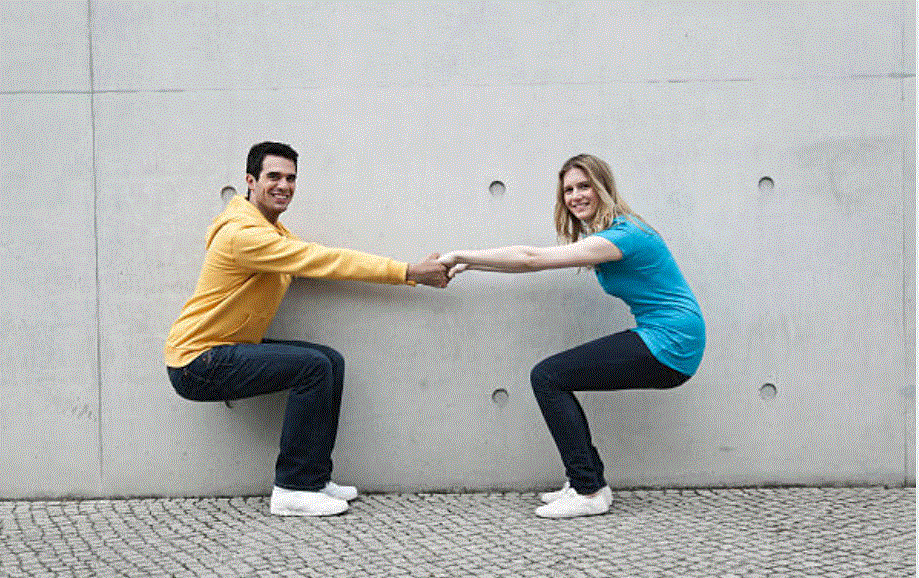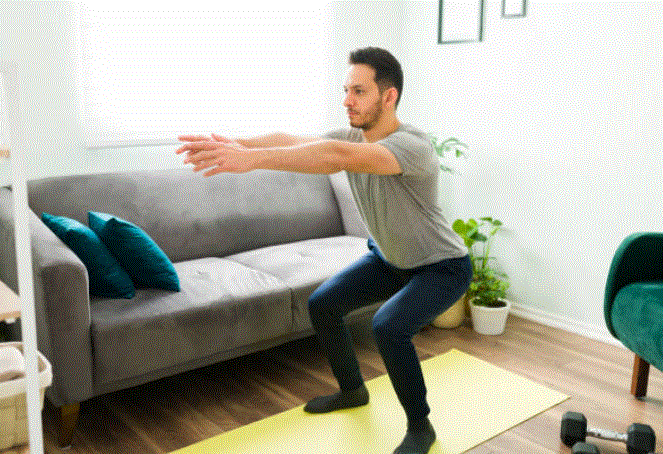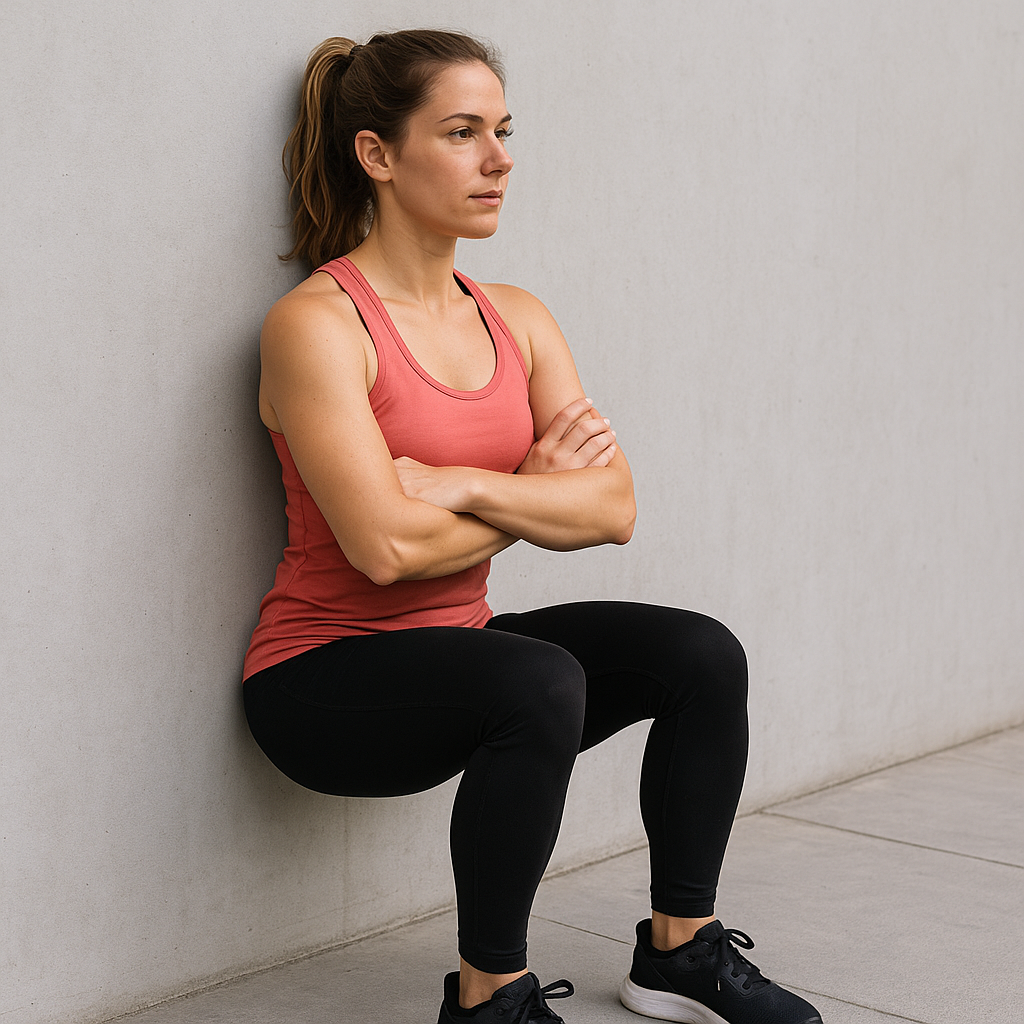Aging doesn’t mean giving up on strength, independence, or movement. In fact, squat exercises for seniors are among the most effective ways to improve mobility, prevent falls, and boost overall leg strength — all crucial for maintaining an active and healthy lifestyle well into your golden years.
In this comprehensive guide, we’ll walk you through the best squat variations for elderly beginners, safety tips, and how to integrate these exercises into a daily routine — even if you’re new to fitness.
Why Squat Exercises Matter for Seniors
Squats are one of the most functional exercises we can do. They mimic the daily act of sitting down and standing up — something we do dozens of times a day. But more than that, they help:
- Build lower body strength (especially the thighs, glutes, hips, and calves)
- Improve balance and stability, reducing fall risk
- Boost joint flexibility, particularly in the hips, knees, and ankles
- Enhance core strength, which supports posture and daily movements
- Increase independence, making it easier to perform tasks like standing, walking, or climbing stairs
For seniors, strength training doesn’t have to be intense or intimidating. With proper form and gradual progression, squats for older adults can be both safe and rewarding.
Top Squat Exercises for Seniors
Squats don’t have to be complicated — and they certainly don’t need to be deep or fast. The goal is to engage your leg muscles, strengthen your core, and improve daily function, all while keeping things gentle and safe.
Here’s a closer look at the most effective squat exercises for seniors, along with detailed step-by-step instructions, common mistakes to avoid, and progression tips.
1. Chair Squats for Seniors

The chair squat is often the first and safest squat variation seniors should try. It’s a low-impact movement that mimics sitting down and standing up — something we do dozens of times a day. It strengthens the glutes, hamstrings, quadriceps, and core.
Instructions:
- Sit on a sturdy chair with your feet flat on the floor, about shoulder-width apart.
- Place your hands across your chest or extend them straight out in front of you for balance.
- Engage your core and slowly shift your weight forward into your feet.
- Stand up by pressing through your heels until fully upright. Try not to use your hands to push off your thighs.
- Pause for a breath at the top, then lower yourself back down with control — avoid dropping into the chair.
- Repeat for 10–15 reps. Rest for 30–60 seconds, then perform a second or third set if comfortable.
Progression Tips:
- As you get stronger, use a lower chair to increase range of motion.
- Hold light dumbbells or water bottles to add resistance.
- Practice slow eccentric squats: take 5 seconds to sit back down.
Avoid:
- Rocking forward or bouncing out of the chair.
- Letting your knees collapse inward — keep them in line with your toes.
2. Wall Squats

Wall squats are excellent for improving posture, leg strength, and core stability without the pressure of balancing. If knee stability is a concern, this is a great place to start.
Instructions:
- Stand with your back flat against a wall, feet hip-width apart and about 18–24 inches away from the wall.
- Slide down the wall slowly, keeping your spine pressed into it. Stop when your thighs are about halfway to parallel — or wherever feels safe.
- Hold this semi-squat position for 5–10 seconds. Focus on engaging your thighs and core.
- Push through your heels and return to standing.
- Perform 8–12 reps, rest, and repeat for up to 3 sets.
Optional:
- Place a stability ball between your lower back and the wall for extra support and smoother movement.
- Try isometric holds: instead of reps, hold the squat position for up to 30 seconds.
Avoid:
- Letting your knees drift past your toes.
- Arching your lower back — keep your spine neutral.
3. Counter or Support Squats

Ideal for anyone working on balance or recovering from surgery or injury. A kitchen counter, rail, or sturdy chair can provide just enough support to help you squat safely.
Instructions:
- Stand facing the counter or support, holding on lightly with both hands.
- Place your feet shoulder-width apart, with toes pointing slightly outward.
- Inhale, then slowly bend your knees and push your hips back as if sitting in a chair.
- Keep your chest lifted and your weight in your heels.
- Only go down as far as comfortable (a few inches is okay at first).
- Exhale and slowly stand back up.
- Do 2–3 sets of 10–12 reps, resting in between sets.
Progression:
- Let go with one hand when your balance improves.
- Add a light resistance band around your knees to strengthen glute muscles.
4. Mini Squats
Mini squats are perfect for individuals with knee arthritis, joint stiffness, or limited mobility. They allow you to strengthen your legs without needing to drop into a full squat.
Instructions:
- Stand upright with feet shoulder-width apart and hands on hips or extended forward.
- Bend your knees slightly, lowering your body just 4–6 inches — enough to feel muscle activation.
- Pause briefly, then return to standing.
- Complete 10–15 reps, rest for 30 seconds, then repeat.
Tip:
- Focus on slow, controlled movements to avoid bouncing or jerking.
- Engage your core throughout to protect your lower back.
5. Sit-to-Stand Repeats

This movement improves real-world strength and is often used in physical therapy. It builds quad, glute, and core strength — all essential for tasks like using the toilet, getting in/out of cars, or standing up from a sofa.
Instructions:
- Start seated in a chair without armrests.
- Cross your arms or reach forward for balance.
- Stand up without using your hands.
- Sit back down immediately — without plopping down.
- Repeat for 8–12 repetitions, up to 3 sets.
Make It Harder:
- Try it on one leg (with the other leg extended slightly).
- Add a small pause at the top or bottom of the movement.
- Increase the speed once you’re comfortable with form.
Bonus: Resistance Band Squats (Advanced)
Once you’re confident with bodyweight squats, try adding a loop resistance band around your thighs just above the knees.
Instructions:
- Place the band above your knees.
- Perform any of the squat variations listed above.
- Focus on pushing your knees outward to keep tension on the band.
- Do 8–10 reps with proper form.
Why This Works:
- Activates your gluteus medius (hip stabilizer).
- Improves knee tracking and joint stability.
Squat Exercise Variations for Seniors
| Exercise Name | Difficulty | Equipment Needed | Target Muscles |
|---|---|---|---|
| Chair Squats | Easy | Chair | Glutes, Quads, Core |
| Wall Squats | Moderate | Wall (optional ball) | Quads, Core |
| Counter Squats | Easy | Support Surface | Glutes, Hamstrings |
| Mini Squats | Very Easy | None | Quads, Knees |
| Sit-to-Stand | Moderate | Chair | Functional Strength |
| Band Squats | Challenging | Resistance Band | Glutes, Outer Thighs |
Safety Tips for Seniors Doing Squats
Doing squats safely is key for older adults. Here are top tips to ensure you’re protected during your workouts:
- Warm up with light marching or ankle circles for 3–5 minutes.
- Keep your back straight and chest lifted throughout the movement.
- Avoid letting your knees go past your toes — this protects your joints.
- Hold onto a stable surface (countertop or railing) when trying new variations.
- Start small — aim for 5–10 reps and increase over time.
- If you experience pain (not just muscle fatigue), stop and consult a physical therapist or healthcare provider.
Benefits Beyond Strength
Adding squat variations into your routine doesn’t just build muscle — it offers holistic health improvements, such as:
- Better balance and fall prevention
- Improved posture and spinal alignment
- Faster walking speed and stair climbing ability
- Enhanced circulation and joint lubrication
This makes squats a powerful part of any senior strength training program.
What If You Have Joint Pain or Knee Issues?
Squats are still possible with modifications. Try the mini squat or chair squat and avoid deep squats unless cleared by a professional.
Using resistance bands around the thighs or adding light ankle weights can also offer strength benefits without extra pressure on your joints.
When to Seek Professional Help
If you’re dealing with medical conditions like osteoporosis, arthritis, or recovering from surgery, speak with a physical therapist or senior fitness specialist to tailor a safe squat routine. They can monitor your form and recommend the best modifications for your needs.
Final Thoughts
Squats may seem like a simple exercise, but their impact is profound — especially as we age. Whether you’re just beginning or already active, integrating squat exercises for seniors into your weekly fitness plan is a smart, science-backed way to stay strong, independent, and mobile.
Start slow, be consistent, and don’t hesitate to ask for support. Your body — and your future — will thank you.



